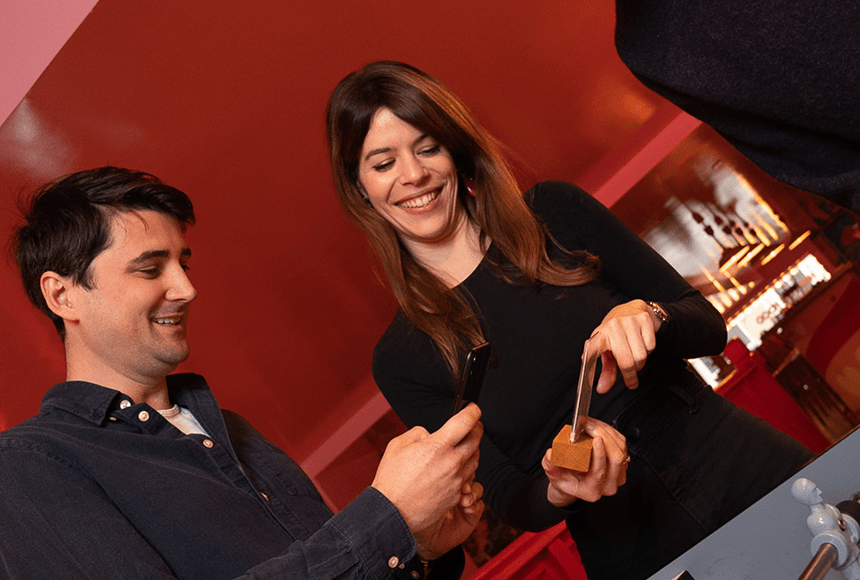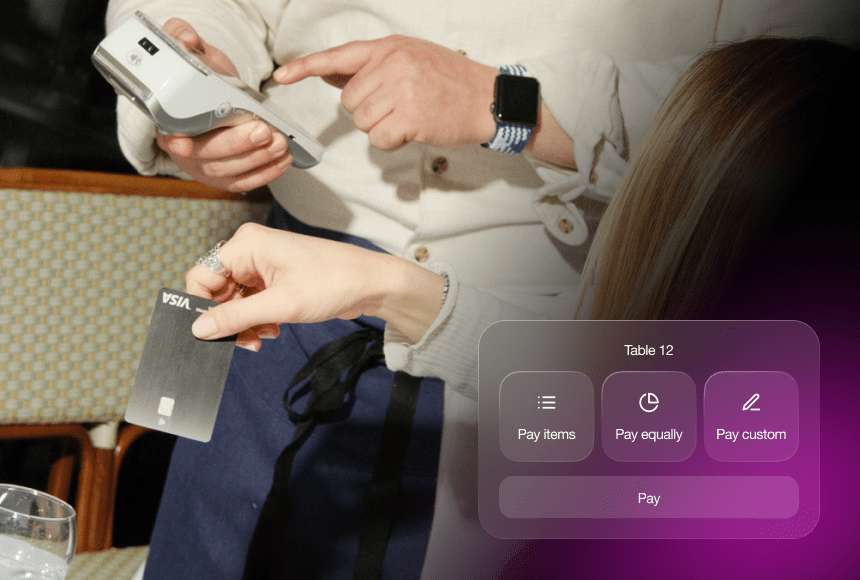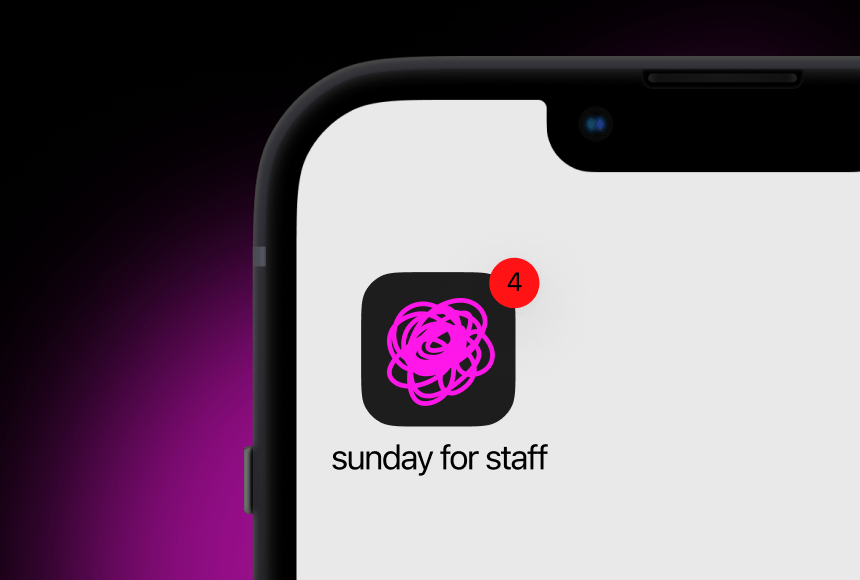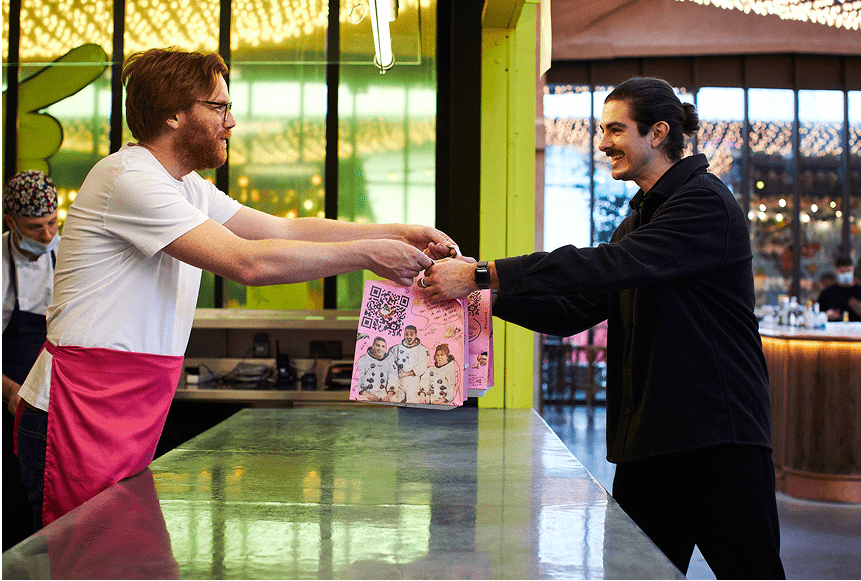
QR Code Menus: The Quiet Revolution Diners Secretly Love
Introduction: A Subtle Shift in Dining Habits
Picture this scenario: a busy restaurant in the heart of London on a Friday night. A group of friends arrives, eager to enjoy food, conversation, and an escape from the week’s stress. Instead of waiting for printed menus (or hunting a server down for a copy), they scan a small black-and-white square at the table with their smartphones. Suddenly, an entire menu plus photos, descriptions, allergy details, promotions, and even a quick payment option appear on their screens—no fuss, no paper, no waiting.
As restaurant owners, you already know about the popularity of contactless payments and how your customers are always looking for convenience. But here’s a twist you might not have fully considered: guests increasingly prefer ordering via QR code—even if they don’t openly say so. In fact, they may arrive at your doorstep expecting the full digital experience but never explicitly ask for it. That’s what we’re diving into: the reasons behind this silent preference, backed by insights from the field, a dash of stats, and real-world examples.
A Snapshot of QR Code Adoption
QR codes (short for Quick Response codes) have been around since the 1990s, but they truly gained momentum only in the past several years. Various factors triggered this, from the global push for contactless transactions to the near-ubiquitous smartphone in nearly every guest’s pocket. According to eMarketer, 86% of UK smartphone users have scanned a QR code at least once in the past year. That’s an enormous pool of potential diners who are already familiar with how QR codes work.
Moreover, a 2022 KPMG survey found that 62% of UK consumers say they frequently use contactless payment methods. While that stat isn’t specifically about QR codes, it underscores a broader willingness to leverage technology for quick, frictionless transactions. This openness to tech translates naturally into the use of digital menus, digital ordering, and integrated tipping solutions.
Why Guests Crave a Contactless Experience (But Don’t Always Reveal It)
There’s a bit of a contradiction in the air: plenty of restaurant-goers still appreciate tradition—lining up to take a seat, receiving a physical menu, chatting with a server—but at the same time, they want convenience above all. Even if they don’t explicitly request it, most tend to reach for their phone the moment they arrive, whether to chat with friends, check messages, or explore your online presence. This means scanning a QR code and placing orders digitally can feel almost second nature.
Why might they hesitate to admit they prefer it? Because many diners still enjoy the classic, human aspect of dining out. Admitting that technology makes the meal easier doesn’t necessarily align with the romanticised view of a restaurant experience. But when we look at what diners actually do—how they navigate the meal and how they pay—QR code ordering speaks directly to their modern expectations:
- Speed and efficiency: People don’t want to wait, especially for small requests or immediate re-orders of drinks.
- Instant access to information: Digital menus quickly update any changes in pricing or availability, removing the awkward moment when the server announces a dish is sold out.
- Privacy and autonomy: Some guests enjoy browsing the menu at their own pace, especially if they’re conscious of dietary restrictions or personal preferences.
- Seamless tipping: A prompt on the screen encourages tipping without turning it into a moment of awkwardness.
The Pandemic Effect: Accelerating the Inevitable
While QR code usage was on an upward trend already, the pandemic acted as a major catalyst. Overnight, contactless experiences in retail and dining went from a pleasant extra to a public-health necessity. Many restaurants that were previously on the fence about digitising their on-site operations decided to jump in headfirst. QR codes, with their ability to facilitate no-touch menus and payments, proved an easy and cost-effective solution.
We’re now seeing that what started as a temporary change has turned into a permanent fixture. Diners accustomed to scanning a code to view the menu quickly adapt, and many of them come to expect that level of convenience everywhere they go. It’s akin to discovering a new ingredient in your kitchen that streamlines your signature dish—you won’t go back to the old way if the new approach consistently yields better results.
Benefits for Restaurant Owners: A Win-Win
If guests secretly prefer QR code ordering, how can you, as a restaurant owner, confidently offer it and reap the benefits? Here’s a peek at the advantages:
- Reduced wait times: Servers no longer rush from table to table taking initial orders. This means better service flow and more attention to special requests.
- In-depth menu browsing: With digital menus, you can showcase dish images, highlight promotions, or specify ingredients and allergens without cluttering your print menu. Diners get a richer menu exploration experience, which often translates into higher average order values.
- Real-time updates: Run out of a certain dish? Update it instantly in your digital menu, so guests aren’t stuck in that awkward “sorry, we’re out of that” scenario.
- Lower printing costs: Free yourself from the need to reprint menus for seasonal changes or price adjustments. It all goes digital, saving money and paper.
- Valuable data insights: Where do diners linger on your menu? Which items do they add to their basket then remove? With the right platform, you can gain a wealth of knowledge to refine your offering.
Addressing the “Tech Overload” Concern
One common concern we hear from restaurant owners is this: “Aren’t customers getting overwhelmed with too many apps and systems?” Indeed, there’s a risk that guests might open a digital menu and struggle with clunky design or forced app downloads. The key is to implement a user-friendly QR code solution that’s intuitive from the first second.
Instead of pushing guests to download an app, consider a platform (like sunday) that instantly brings up the menu in their mobile browser. It’s a smoother, more universal experience. And if customers can easily pay, split bills, and even leave Google reviews at the end, all the better. Minimising steps encourages them to adopt the technology happily, never feeling they’re jumping through hoops just to order a burger.
Overcoming Resistance within Your Team
Let’s talk about something that often goes overlooked: the internal resistance from servers and management teams. Some staff worry that technology will overshadow the personal touch they’ve spent years cultivating. However, most actually find that digital ordering frees them from repetitive tasks, allowing them to focus on customer service at a deeper level:
- Quality interactions: Time saved on manually inputting orders can be spent making recommendations, discussing wine pairings, or simply connecting with your guests.
- Upselling opportunities: Staff can see real-time data on which items guests show interest in and tailor their approach accordingly.
- Less friction during peak hours: By letting QR code ordering handle the heavy lifting during the dinner rush, staff can concentrate on tasks that require a human touch.
Restaurants that successfully embrace QR code ordering often discover that staff job satisfaction goes up, as they can focus more on the parts of the job that matter most—delighting guests.
A Case Study in Subtle Preference
I recall a stressful lunch service in a bustling modern bistro where about half the tables were new visitors. The biggest complaint: slow order-taking. Management decided to test a QR code ordering option for one week, on about ten tables, keeping the traditional approach in place for the rest. At the end of that week, they asked the part of the dining room that had used QR codes about their experience. Here’s what happened:
- 90% said they noticed faster service.
- 85% ordered dessert or at least one additional item because they had more time to explore the menu in detail.
- Average spending per head increased by roughly 15% on those ten tables.
- Tips were also higher, thanks to the frictionless tipping prompt at checkout.
Did every single guest rave about the QR code? Not necessarily, but the numbers spoke volumes. When given a breezy, user-friendly way to look at the menu and settle the bill, diners not only used it; they spent more and tipped more. That’s the benefit of tapping into guests’ underlying preference, even if they don’t come in waving a banner that says they want digital ordering.
How QR Ordering Impacts Table Turnover
A vital metric for any restaurant is how many seatings you can accommodate in a given shift without compromising quality. QR code ordering can have a direct impact on table turnover. With guests able to browse, order, and pay at their convenience—no waiting for the server to notice they need the bill—tables can free up more quickly, especially during busy lunch periods when diners appreciate a fast in-and-out experience.
Many UK restaurants are noticing an uptick in midday clientele, especially those who pop in for a quick bite between meetings. By speeding up ordering and payment, you can seat more guests over the lunch hour and boost your revenue in a tight time window.
Expanding Beyond the Menu: Tips, Reviews, and Loyalty
QR codes aren’t just about ordering. They can also integrate tipping prompts right on your guest’s smartphone, gently encouraging them to leave a gratuity, especially when service was friendly and smooth. Because it’s a softer, digital nudge, it often leads to higher tips than if the server simply drops off a receipt and a pen.
Additionally, some QR code-powered platforms allow guests to post Google reviews directly after they pay. If your restaurant prides itself on top-notch service and memorable dishes, you can funnel that positive feeling into valuable online feedback. Having an immediate review prompt significantly raises the odds of a guest leaving feedback while their impressions are freshest (and likely most complimentary).
Loyalty also layers nicely into QR code experiences. Instead of rummaging around for a physical loyalty card, your guest sees a prompt to join your digital loyalty programme. With a few taps, they’re in, potentially set up for automated re-marketing offers, birthday specials, and other incentives. All of this happens right there at the table, capturing customers’ attention in the moment.
About Payment Terminology: “Card Machine” and Other UK Basics
You might be used to hearing about the “TPE” in a French-speaking context, but in the UK, it’s more common to say “card machine,” “payment terminal,” or “POS terminal.” Whichever term you prefer, the key is ensuring that your diners recognise it as the tool they need to settle their bill if they’re not paying via QR code. However, with QR code solutions integrated into your point-of-sale system, the entire payment process becomes seamless, and the “card machine” becomes more of a backup option rather than the main route.
Remember, the name of the game is minimising friction. The more direct the ordering and payment experience, the happier the diner. And the happier the diner, the more loyal they are likely to become.
Setting Up a Practically Foolproof System
Implementing QR code ordering doesn’t have to be an epic project. But it does require a few strategic steps:
- Simplify your menu layout: Make sure your digital menu is well-organised. Clear headings, understandable categories, and high-quality images matter.
- Robust internet connection: Ensure your Wi-Fi can handle the traffic. Nothing kills enthusiasm faster than a loading screen that won’t budge.
- Train your staff thoroughly: Help them feel comfortable guiding customers through the process. Encourage your team to see digital ordering as an advantage.
- Promote the QR code at each table: Position it in a stand or clearly visible format so diners don’t have to hunt for it.
- Integrate with your existing POS system: A seamless flow of orders is essential. You want data going from the table to the kitchen swiftly and accurately.
If your platform supports custom branding, take advantage of it. Ensure the digital interface reflects your restaurant’s vibe so diners don’t feel they’ve strayed into a generic ordering app.
Will QR Code Ordering Replace Traditional Service?
It’s a valid question, but one that might be framed incorrectly. The goal isn’t to replace the memorable, personal aspects of hospitality. It’s to remove the repetitive or mundane steps that don’t add value to the guest experience. Think of it like removing small bones from a fish fillet before you serve it. You’re preserving the delicate texture and taste, but you’re eliminating the unpleasant bits that might cause friction or slow enjoyment.
Your best servers remain key players, informed ambassadors who make dish recommendations, share specials, and engage with guests. QR code ordering is simply their efficient ally, handling the tasks that eat up time and energy. So no, it won’t replace personal interaction; it optimises it.
The Cost Factor: Is It Worth the Investment?
Another significant question that might arise is about the cost of adopting QR code ordering solutions. Basic QR code menus can be inexpensive or even free, but if you want integrated, real-time order management, payment solutions, and analytics, there will be monthly or transactional fees.
Nonetheless, consider the number of printing cycles you won’t need, the potential for higher average spend, and the reduction in staff workload. When the system is implemented correctly, most restaurant owners find they quickly recoup their investment and even see a net gain in revenue.
Plus, your restaurant’s brand image might get a boost. Many diners, especially younger demographics, see modern digital ordering methods as a marker of a forward-thinking, customer-oriented business. That intangible factor might lead to more repeat visits or positive word-of-mouth than you could have achieved with strictly traditional methods.
Crafting a Balanced, Modern Dining Experience
By introducing efficient technology, you’re offering diners a choice: keep the personal service elements they love while removing time-consuming steps nobody really enjoys. Guests want to hear about your specials. They want to know which dish pairs best with the wine on your list. They appreciate a warm smile and a friendly chat about the local produce you use. But when it comes to reordering a round of drinks, checking the availability of a dessert, or splitting the bill among four credit cards, a digital approach can save time for everyone involved.
This blend of personal and digital is ultimately the sweet spot. It’s like modern fusion cuisine: you combine the best of tradition with fresh, innovative techniques. And in doing so, you create an experience that stands out.
Engaging Diners in the Digital Shift
If you’re worried that some of your guests might not feel comfortable with a smartphone-based system, there are creative ways to gently encourage them to give it a try:
- Offer a small incentive: A complimentary beverage top-up or a loyalty point bonus for using the QR code ordering process.
- Use clear instructions: A quick step-by-step guide on the table can reassure older or less tech-savvy diners that scanning and ordering is a breeze.
- Lead by example: Have your staff offer to show them how it works. A personal demonstration can remove the mystery in seconds.
In truth, most guests are more capable with phone-based transactions than we assume. Because they’re not always fond of openly acknowledging how reliant they are on technology, that preference often remains unspoken.
Looking Ahead: The Future of Dining Technology
Ordering technology is evolving rapidly. Beyond QR codes, we’re already witnessing the rise of self-serve kiosks in fast-casual eateries, AI-driven menu recommendations, and even augmented reality experiences where diners can visualise how a dish might look on their table. But QR codes remain one of the simplest, most cost-effective ways to bring the digital shift into your establishment without overhauling your entire operational structure.
What’s more, the convenience factor for guests is unmatched. If restaurant owners focus on building a frictionless, user-friendly approach—free of forced downloads or complicated steps—it can dramatically improve guest satisfaction, boost revenue, and enhance staff efficiency. Everybody wins, even if your guests don’t shout from the rooftops about how they prefer it. But rest assured, their behaviour speaks volumes.
Frequently Asked Questions (FAQ)
Do guests need a special app to scan QR codes?
In most cases, no. Modern smartphone cameras can scan QR codes directly in the native camera app. Once they hover over the code, a prompt appears, and the guest can view your digital menu in their browser.
What if some diners don’t want to use the QR code?
It’s always wise to have a backup, such as a small number of printed menus on hand for those who prefer paper or don’t have a smartphone. However, you’ll find that most guests are open to trying the QR code method when it’s clearly displayed and easy to use.
Will adopting QR code ordering eliminate the role of servers?
Not at all. It’s meant to complement your existing staff by removing repetitive tasks (taking orders, handling checks). Your team can then focus on adding personal touches, recommending specials, and creating a welcoming atmosphere.
Is it complicated to link the QR code system to my existing payment terminal?
Many platforms offer straightforward integrations. You’ll want to choose a provider that supports UK-specific payment methods and seamlessly ties into your POS. That way, orders flow directly to the kitchen, and payments register without extra manual input.
Do QR code solutions provide analytics about ordering habits?
Yes, many do. The insights can help you see which dishes are most popular, what time of day certain items sell best, and how many items are abandoned before checkout. With that data, you can adjust your menu, pricing, or promotions accordingly.
A Warm Invitation to the New Dining Normal
Technology in hospitality is here to stay, and QR code ordering is one of the least intrusive, most beneficial ways to merge tradition with innovation. It preserves the heart of hospitality—great food, attentive service, memorable experiences—while trimming the hassle and wait times that can frustrate diners.
Even if they don’t always voice it outright, your guests appreciate the simplicity and control of scanning a code, exploring the menu, and making quick decisions. By embracing QR code ordering, you can strengthen your restaurant’s image, boost staff morale, and watch tables fill up faster and turn over more smoothly. And that might just become your secret ingredient for thriving in a rapidly evolving dining scene.
Find out more today
Drop us your details below and we’ll reach out within the next 24
All your orders – in and out.
Our mobile ordering solution allows your customers to order and pay whenever they are ready with an integrated QR code.




